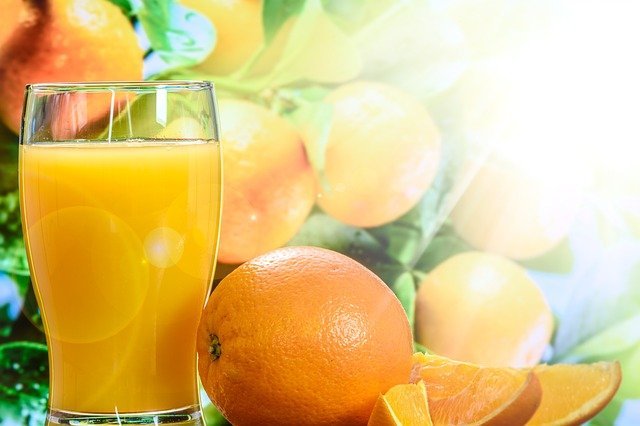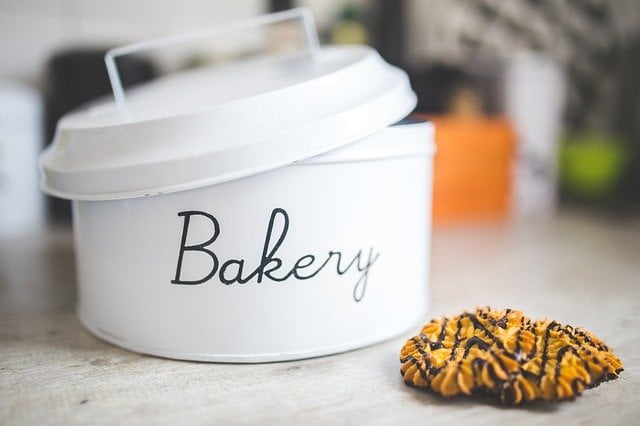Over 96 million American adults—more than 1 in 3—have prediabetes, and most don’t even know it. This silent condition means your blood sugar is higher than normal, but not high enough for a diabetes diagnosis. Left unchecked, up to 70% of people with prediabetes will eventually develop type 2 diabetes.
Common early signs like fatigue, increased thirst, or frequent urination are easy to ignore, but your daily food choices matter more than you think. Certain foods can spike your blood sugar and push you closer to diabetes, while smarter swaps can help you take back control.
In this article, we’ll share 6 foods to avoid on a prediabetes diet, along with healthier alternatives and simple tips to protect your health, starting with your next meal.
Wondering if your daily symptoms could be a red flag? Take this quick quiz to find out if you’re showing signs of prediabetes—and whether it’s time to take action.
Prediabetes Symptom Quiz
Do You Have Signs of Prediabetes?
Answer the questions below to assess your risk. This quiz is not a diagnosis but can help you understand if you should speak to a healthcare provider.
Prediabetes Diet Foods to Avoid
If you’ve been feeling more tired than usual, craving sugar, or riding the blood sugar rollercoaster after meals, your food choices might be working against you. What you eat every day truly matters. Some common foods—even ones that seem harmless—can quietly spike your blood sugar and push you closer to type 2 diabetes. Let’s break down the biggest offenders hiding in your daily routine—and what to eat instead.
1- Fried Foods
Fried chicken, French fries, chips, and fast food favorites are often loaded with unhealthy fats, calories, and refined carbs. They can also promote inflammation, which worsens insulin resistance.
Why avoid:
Regularly eating fried foods increases the risk of weight gain, insulin resistance, and heart disease—all major concerns for people with prediabetes.
Better choices:
- Air-fried or baked versions of your favorite foods
- Roasted sweet potatoes instead of fries
- Homemade kale or veggie chips
💡 Tip: Use olive oil or avocado oil for roasting instead of deep-frying.
2- Sugary Drinks
Beverages like soda, sweetened iced tea, energy drinks, and flavored coffee drinks are some of the worst offenders for blood sugar spikes. These drinks are rapidly absorbed into the bloodstream, leading to sharp increases in glucose and insulin levels—something especially harmful for people with prediabetes.
Why avoid:
A single 12-ounce can of soda contains about 35–40 grams of sugar, more than the recommended daily limit in just one drink. Over time, these sugar surges can worsen insulin resistance and increase the risk of type 2 diabetes.
Better choices:
- Infused water with lemon, cucumber, mint, or berries adds flavor without sugar.
- Unsweetened iced tea or herbal tea for variety.
- Black coffee or coffee with a splash of unsweetened almond or oat milk.
💡 Tip: If you’re used to sugary drinks, try reducing the sweetness gradually to help your taste buds adjust.
3- Sugary Breakfast Cereals
Many cereals marketed as “healthy” are loaded with sugar and refined grains. Starting your day with these can lead to a quick blood sugar spike followed by a mid-morning crash.
Why avoid:
Most breakfast cereals (even granola or “high-fiber” versions) contain 10–20g of added sugar per serving, often without enough protein or fat to slow digestion.
Better choices:
- Steel-cut oats or rolled oats with cinnamon and nuts
- High-protein breakfast bowls with eggs and vegetables
- Plain Greek yogurt with flaxseeds and berries
💡 Tip: Always check the nutrition label—even “natural” cereals may contain hidden sugars.
4- Sweet Snacks and Desserts
Cookies, cakes, doughnuts, candy bars, and ice cream are packed with refined sugar and unhealthy fats. These treats offer little nutritional value and contribute to blood sugar swings.
Why to avoid:
Even small portions of sweets can cause rapid glucose spikes. Eating them regularly makes it harder to maintain stable blood sugar levels.
Better choices:
- Fresh fruit with nut butter or dark chocolate
- Chia pudding or Greek yogurt with cinnamon
- Homemade oatmeal cookies with no added sugar
💡 Tip: Craving something sweet? Try pairing fruit with protein or fiber to blunt the sugar response.
5- Processed meats
Bacon, hot dogs, sausages, and deli meats often contain added sugars, sodium, and preservatives. Some studies suggest processed meats may increase insulin resistance and diabetes risk.
Why avoid:
Frequent intake of processed meats has been linked to higher inflammation markers and metabolic disorders.
Better choices:
- Grilled chicken or turkey breast
- Canned tuna or salmon (in water)
- Lentils, beans, or tofu for plant-based protein
💡 Tip: Choose fresh, unprocessed meats or plant-based protein at least a few times a week.
6- Bakery
White bread, white rice, pasta, pastries, and many baked goods are made with refined grains that have been stripped of fiber and nutrients. These carbs digest quickly and cause a rapid rise in blood sugar.
Why avoid:
Refined carbs are digested almost as quickly as pure sugar, leading to blood sugar spikes and crashes, which can trigger more hunger and cravings.
Better choices:
- Whole grain bread or sprouted grain bread
- Brown rice, quinoa, bulgur, or barley
- Oats or whole grain pasta
💡 Tip: Look for “100% whole grain” or “whole wheat” on ingredient labels—not just “wheat flour.”
Pre-diabetes Food to Eat
There are some ideal foods for pre-diabetes, which include:
- Fish, meat, and other sources of protein: Choose lean meats such as fish, turkey, chicken, eggs, legumes, and beans.
Remove the meat fat or remove the skin from the chicken, and include 2-3 servings of these foods per day.
- Fruits and vegetables: Choose to have at least 5 daily servings of fruits and vegetables.
- Wholegrain Bread, cereals, and other starchy foods: Choose wholegrain bread and cereals made with bran or oats. These choices make perfect ideas for a pre-diabetic breakfast.
- Brown rice and durum wheat or whole-grain pasta.
- Choose new potatoes instead of old ones, you can try using sweet potatoes for a change.
- Semi-skimmed milk and dairy products: Try to include at least 3 servings per day to ensure adequate calcium intake.
| Foods to Avoid | Whole grains (brown rice, whole grain bread) |
|---|---|
| Sweet foods (candy, soft drinks, ice cream, baked sweets) | Fresh fruits (apples, berries, oranges) |
| Juice | Water, unsweetened tea, or sparkling water with a splash of lemon. |
| Wheat flour (white bread, pasta, white rice) | Whole grains (brown rice, wholegrain bread) |
| Dried fruits (raisins, dried apricots) | Fresh fruits |
| Processed meats (sausages, hot dogs, bacon) | Lean proteins (chicken breast, fish) |
| Bakery (cakes, pastries, cookies) | Whole grain or almond flour-based baked goods |
How Food is Related to Diabetes
As we mentioned before, genetics is one factor that increases the risk of developing diabetes. However, lifestyle plays an important role in the disease’s development, as excess body fat and lack of physical activity are potential risk factors.
Nevertheless, in pre-diabetics, sugar from food builds up in the blood, causing high sugar levels as insulin does not easily transport it into cells because of high insulin resistance.
The major problem is around diets rich in refined carbohydrates. Refined carbs are stripped from most fibers, which digest quickly, causing blood sugar spikes.
How to lose weight by checking blood sugar
With most people with diabetes, the body has difficulty lowering blood sugar levels after meals without medications like metformin and other diabetic treatments.
When a person eats more calories than his body needs, they are stored in the body as fats, which can make you gain weight, especially around the abdomen.
Check out Type 2 diabetes foods to eat and avoid
However, belly fat is an alarm that you have high insulin resistance, which explains weight gain in many people with diabetes.
Can Prediabetes Be Reversed?
Yes, you can reverse prediabetes by following a healthy diet and lifestyle; however, to do that, consider the following tips:
- Reduce unhealthy fats in your diet.
- Decrease the added salt and salty foods.
- Include at least one or two servings of oily fish weekly, such as salmon, tuna, herring, and mackerel.
- Replace soft drinks with sugar-free drinks.
- Try to lose some weight if you are overweight or obese. To know your status, check the BMI Calculator.
- Limit the amount of sugary foods.
- You may eat foods rich in carbohydrates; however, make sure it has a low glycemic index.
- Replace saturated and trans fats with healthy monounsaturated fats like olive oil.
- Have at least five or more servings of fruit and vegetables daily.
Frequently Asked Questions
Is keto good for prediabetes?
Yes, the ketogenic diet limits sugar and carbohydrate intake to a minimal amount daily, which helps control blood sugar.
However, you must consult your doctor or health care professional before starting the keto diet, as it might put you at risk of hypoglycemia.
Can I eat fruits if I have prediabetes?
Yes, you can eat fruits, but it’s best to choose those with a low glycemic index. Fruits like berries, apples, pears, and cherries are good options because they have less impact on your blood sugar levels. Be mindful of portion sizes and avoid fruit juices which can spike blood sugar.
Are whole grains acceptable on a prediabetes diet?
Absolutely. Whole grains such as brown rice, quinoa, whole wheat bread, and oatmeal are preferable over refined grains. They have more fiber, which helps slow down the absorption of sugar into the bloodstream, keeping blood sugar levels stable.
Is it necessary to avoid all carbohydrates?
No, it’s not necessary to avoid all carbohydrates. The key is to choose complex carbohydrates that are high in fiber, such as vegetables, legumes, and whole grains. These types of carbs are digested more slowly, helping to prevent rapid spikes in blood sugar.
Can I have dairy products if I have prediabetes?
Yes, but opt for low-fat or fat-free versions of dairy products. Greek yogurt, skim milk, and low-fat cheese are better choices than their full-fat counterparts, which can contribute to insulin resistance.
Are there any specific drinks I should avoid?
Definitely. Avoid sugary drinks like soda, energy drinks, and sweetened teas. Even fruit juices should be limited due to their high sugar content. Instead, drink water, unsweetened tea, or coffee without added sugar.
What about eating out? How can I make better choices?
When eating out, look for menu options that include lean proteins, vegetables, and whole grains. Avoid fried foods, sugary desserts, and creamy sauces. Don’t be afraid to ask for modifications, like dressing on the side or grilled instead of fried options.
How can I satisfy my sweet tooth without spiking my blood sugar?
Satisfy your sweet cravings with healthier alternatives like a small piece of dark chocolate, a handful of nuts with dried fruit, or Greek yogurt with fresh berries. These options provide a sweet taste with added nutritional benefits and less impact on blood sugar.



